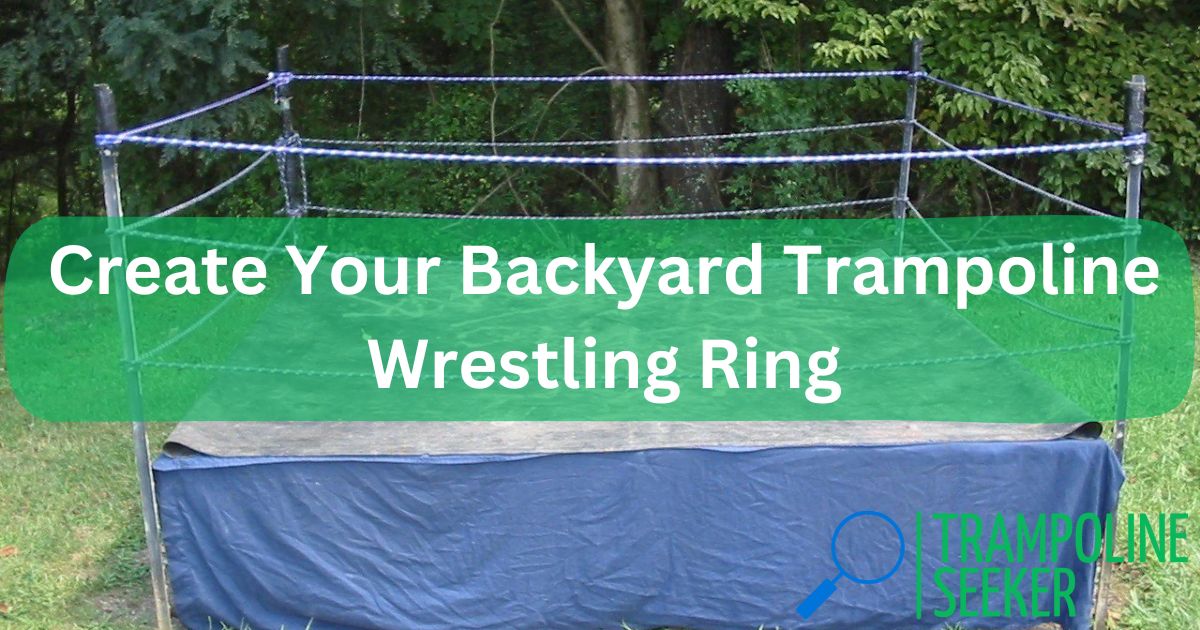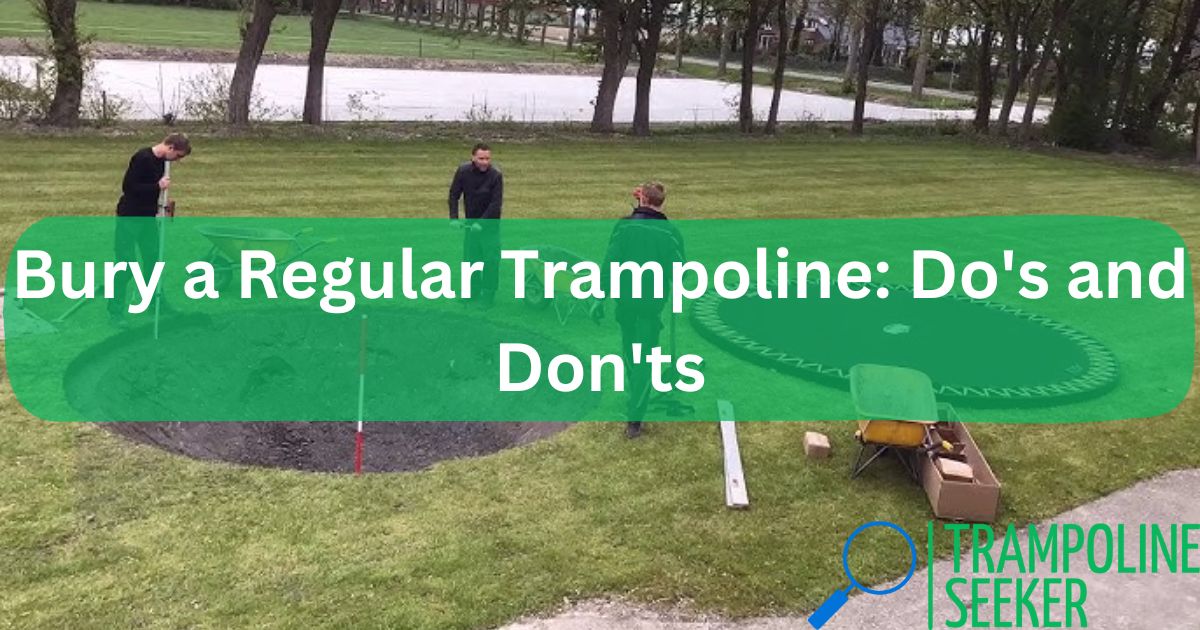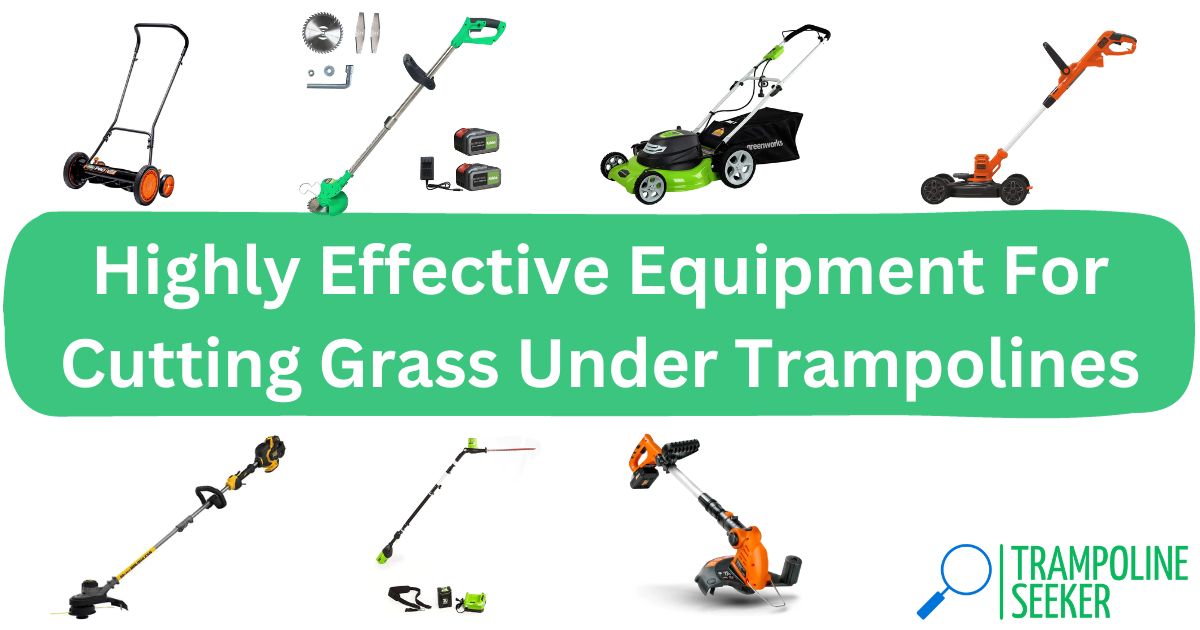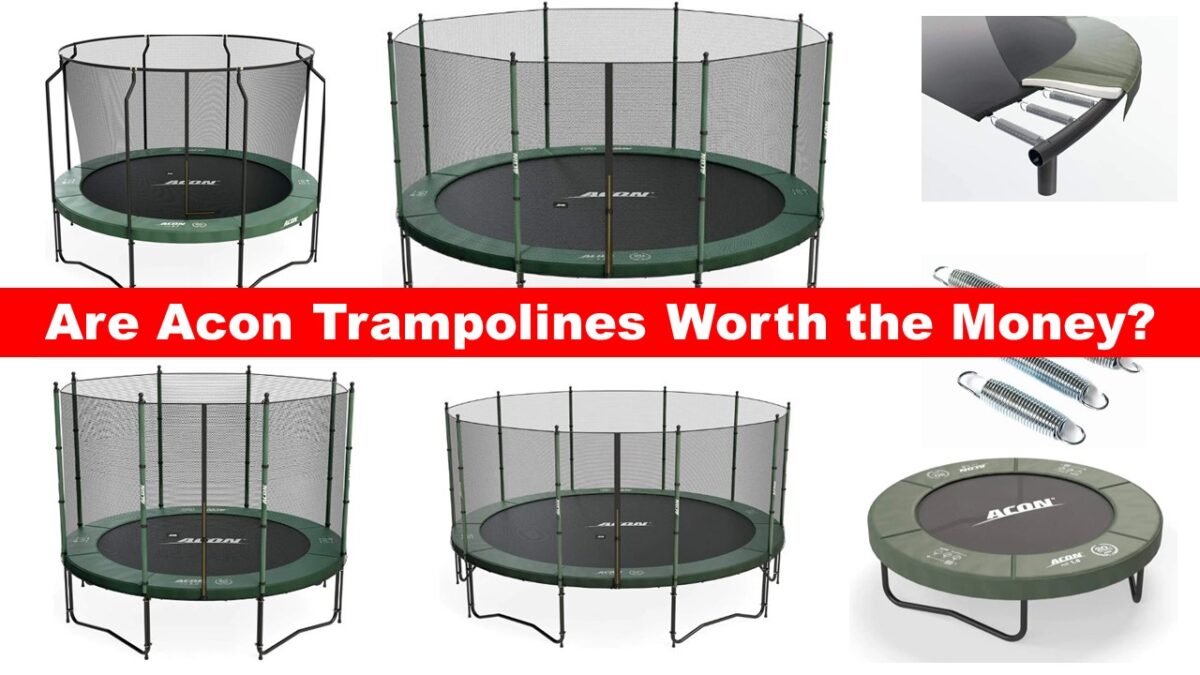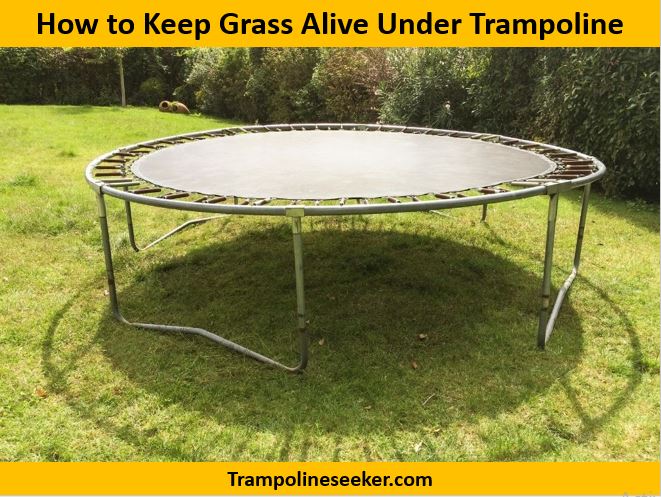An outdoor trampoline can provide fun for the whole family. Adults and kids alike find them entertaining because of the high jumps and acrobatics they perform.
Everyone who owns a trampoline will notice that it becomes dirtier and dirtier with each use. Outdoor trampolines are subjected to the same conditions. Trampoline mats get dirty because of the elements, including the sun, rain, wind, and debris.
Leaving your trampoline outside in the snow and storms of winter is not a good idea. When you jump on a dirty trampoline mat, you risk getting those stains all over your body.
Similarly, if you don’t keep your trampoline in good condition, the strings will rust and the mat will rip. In this article, we will provide you with the best tips for keeping your trampoline clean and safe after the winter season. But before we get started, let’s talk about How To Clean a Trampoline After Winter?
12 Tips On How To Clean a Trampoline After Winter?
1. Tips On Winterization
To begin, remove the frame pads and store them inside so they don’t get wet from the rain or snow. Water can also easily drain through the trampoline mat because it is permeable to water. Yet, a heavy buildup of snow on the mat can put too much strain on the springs. Use a broom to sweep the snow away after every storm.
In addition, trampoline covers are not suggested materials. A mat cover serves no purpose other than to trap moisture, which leads to mildew and eventually sagging.
Wind is another factor that must be carefully considered. In windy conditions, trampolines can be dangerous. It’s crucial that you anchor the trampoline to the ground. Here’s more information on winterizing a trampoline.
2. Best Way to Clean a Trampoline
Despite popular belief, it is never a good idea to use chemicals on a trampoline. Just use some soap and water.
What you will need:
- A broom
- A bucket
- Warm soapy water
- Brushes for scrubbing
- A water hose
- Clean towels
A trampoline can be easily cleaned. It’s also something that kids can enjoy doing. Moreover, cleaning the trampoline gives you an excellent chance to examine it thoroughly for any signs of wear and tear. Injuries sustained while jumping can be prevented if worn or broken parts are promptly replaced.
3. Clean the Trampoline Mat Surface
The trampoline’s mat is its most important component. Knowing how to keep it in good condition and clean it effectively is crucial. Begin by sweeping the trampoline to remove any larger debris such as leaves and dirt. The broom can also help shake loose dust that has settled into the mat’s fibres. Some people assume the hose will do the trick, and skip this step.
Second, we recommend washing the trampoline off with water. Be sure to soak it thoroughly, and then begin scrubbing it with a brush and some warm soapy water. The mat can be effectively cleaned with a soft bristle brush without being torn or scratched.
When you’re done scrubbing the trampoline, give it a good rinse to remove the soap. Be thorough in your effort to remove the soap.
Dry the trampoline off with the towels. It should also be sun-dried for a while before being used. A slip and fall can happen in the smallest amount of wet spots.
4. How to Clean the Trampoline Safety Net
The use of safety nets around trampolines is essential. They greatly reduce the danger of harm from a fall off or collision with the trampoline’s frame. Thus, making sure your safety measures are in place before taking the plunge can mean the difference between a thrilling jump and a broken bone.
A manual takedown and washing of the entire net is always an option, but there are quicker and more convenient methods. One of the most convenient ways to clean the net is to purchase a car wash hose attachment. When attached to a hose, it effectively increases the pressure of the water being released.
5. Cleaning the Trampoline Pad: What You Need to Know
Pads for a trampoline are nearly as essential as the mat itself, especially in wet climates where the springs can rust and become ineffective. They lack the elastic quality of the mat. They serve more as a cushion. The main purpose of these covers is to keep the springs dry and safe from the elements, but they also serve to keep you safe from the springs themselves.
They require the same care when cleaning as the mat does because of their similarities. However, you should still be extra cautious around the joint where the pad meets the springs and the mat. This is where the majority of the gunk settles.
6. How to Clean Trampoline Springs
If you want to extend the life of your trampoline, it’s essential that you keep the springs clean. Due to their metal construction, they rust and become fragile over time, rendering them useless. A rusty spring can also make a lot of noise. We can’t imagine anyone enjoying a trampoline that squeaks.
Cleaning them, like cleaning the mat, is still simple. Wash them with a brush and some soapy water, and then gently push them dry.
If you want to spray rust protection on them, you’ll need to take them off the mat first. The mat and pad are vulnerable to chemicals, so this is crucial information to have. You can also do this in stages without completely removing the mat.
7. How to Clean Rusty Trampoline Springs
Before jumping on a trampoline, you should always double-check the condition of the springs. Tape should be used to identify any rusty springs that are discovered during an inspection. Here are some simple methods for preventing spring damage and eliminating rust.
Start by mixing the juice of two limes with half a cup of salt in a separate bowl. If you can’t find limes, use lemons instead. Put the bowl’s contents through a mixer on high until a paste forms. Using a wooden tongue depressor, rub this paste onto the corroded springs and let it sit for two to three hours.
After that, use a rusty old toothbrush to remove the paste and rust. Make sure you give it a good scrub down. Use the hose to clean it, then blow it dry.
Although rust can penetrate deeply into the springs, this simple recipe should help you with the rustiest spots. Simply throw it away and replace it with a new one.
Applying petroleum jelly to the springs will keep them lubricated and stop further rusting.
8. Clean Mold Off a Trampoline
The reasons why trampoline covers aren’t a good idea in the winter have already been discussed. They encourage mold or mildew growth because they hold in moisture. Despite the fact that it is an unpleasant sight, mold can be easily removed from your mat.
During our research, we discovered that most people recommend using chemical agents such as bleach. We did, however, discover a more secure strategy, and that involves using pressure washers.
Mold can be “blasted” away with a pressure washer. Perhaps most notably, you can alter the pressure without worrying about trampoline damage. So, we think you should give this a shot first.
Last but not least, bleach can kill the mold if pressure washing fails. Applying it, however, requires extreme caution. Bleach is dangerous to use because of its corrosive properties. If bleach is left alone for long enough, it will eventually corrode steel. After scrubbing off the mold, you should give the mat a good wash with water.
9. Clean Sap Off a Trampoline
Your trampoline will be vulnerable to the elements if you keep it outside. Tree sap is one of life’s more vexing issues. Not wanting to risk damaging the mat, many people are reluctant to go all out and eliminate this sticky threat. Nonetheless, you shouldn’t be concerned because we have some advice on how to remove sap from a trampoline.
To begin, grab a sponge and some boiling water. Hot water will soften the sap, allowing you to scrub it away with the sponge. Don’t fret over ruining the mat; mats are fabricated from extremely durable materials. I really hope this helps.
If that doesn’t do the trick and the sap remains, we can always try some hand sanitizer. Of course, we need to use hand sanitizer. We know this may seem strange, but trust us, it works! First and foremost, it’s easily accessible anywhere.
Isopropyl alcohol (rubbing alcohol), the main ingredient in hand sanitizer, dissolves and evaporates resin.
10. Clean Snow Off a Trampoline
You can leave your trampoline out in the winter if you check on it after every storm. You should remove the snow from the mat on a regular basis.
In spite of popular belief, snow can be quite heavy when it accumulates. Your trampoline’s springs could end up being overstretched and unusable.
To begin, avoid using shovels and other sharp tools that could puncture your mat. A gentle broom is recommended. It’s just as important to shovel outwards as it is to do so from the inside. To keep the springs from breaking, we must not put any additional pressure on them as we clean.
11. How to Clean a Water Trampoline
A water trampoline is a pricey piece of equipment. Therefore, we suggest being careful and taking an active role.
Keep the PVC fabric spotless at all times. The trampoline’s lifespan is shortened by dirt, mold, algae, and other stains, which cause friction and scratches. These trampolines have a high level of sensitivity. Just one puncture will quickly lead to deflation.
Never clean with a pressure washer or other cleaning product that contains petroleum. A gentle soap is all that’s needed.
We also advise taking care of issues like tears and holes as soon as possible. If not contained, they will “grow” and become even more of a problem.
12. How Do They Clean Trampoline Parks
You can be pretty casual about cleaning your trampoline a few times a year to keep it in top shape, but trampoline parks can’t afford to be.
All can enjoy trampoline parks because they are in the public domain. Since this is the case, they must comply with health and safety laws. This is to be expected, given the high volume of visitors who undoubtedly bring their own germs each day.
Every day, employees in trampoline parks are tasked with disinfecting the facility using specialized anti-bacterial sprays. Because of the potential for skin irritation, some parks require visitors to wear special jumping socks.
Dust and allergens are other factors that needs to be considered. Allergies affect a large population, especially young people. Since trampolines are so effective at distributing a great deal of air, they need to be vacuumed frequently in trampoline parks.
Articles You May Like to Read:



